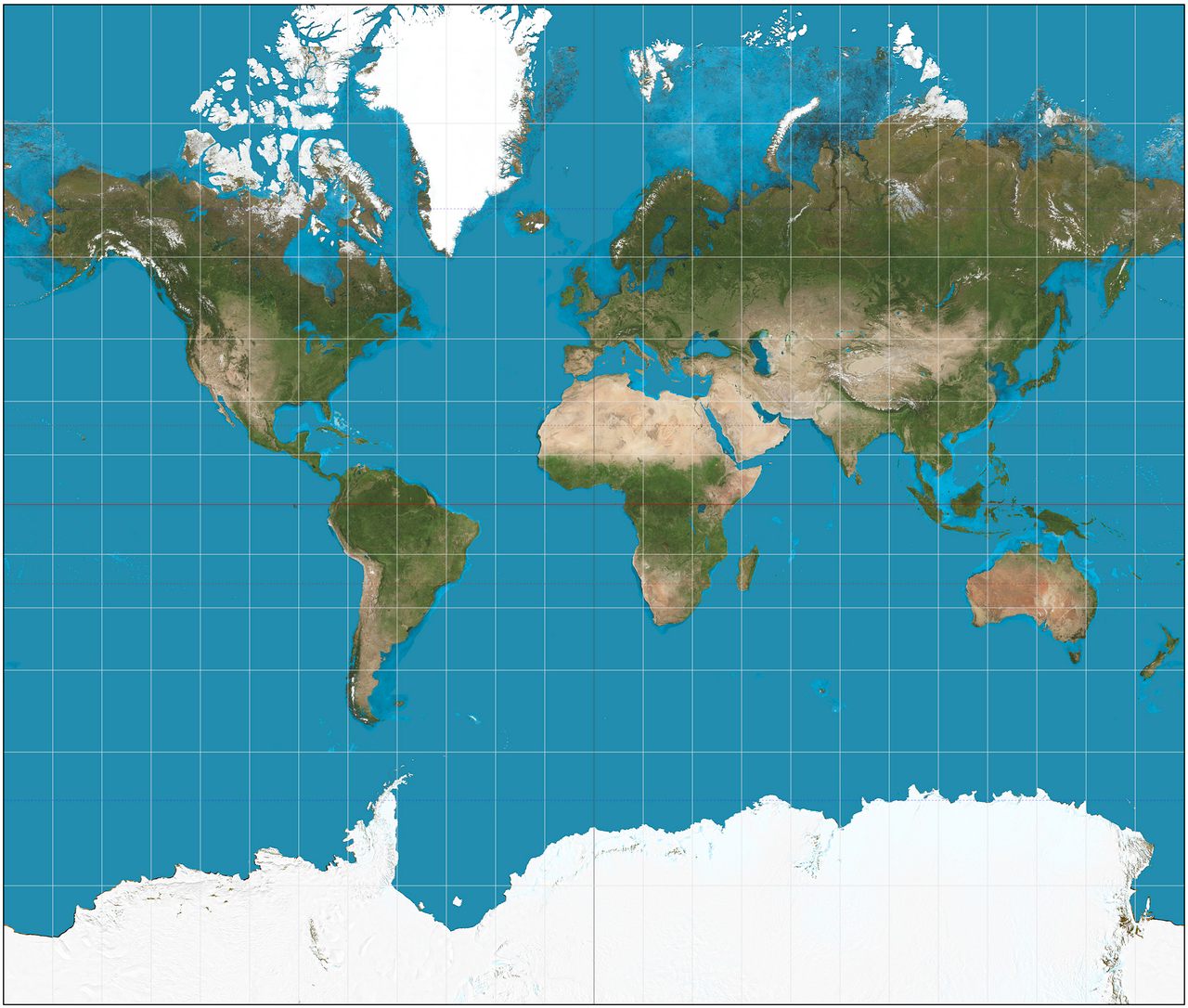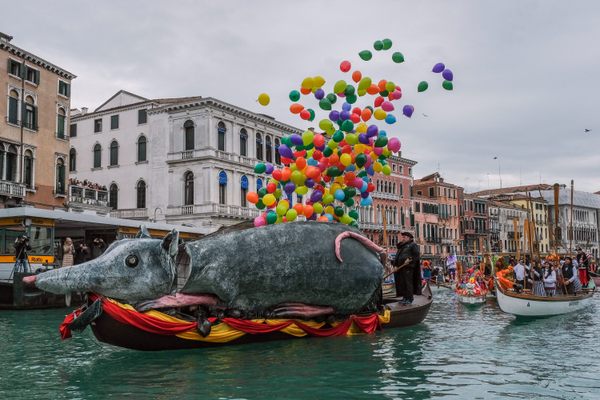Some Residents in This Scottish Dark Sky Town Decided to Go Even Darker (Updated)
In Moffat, a volunteer-led effort to switch off artificial lighting has had some unexpected results.
Editor’s note: This article has been retracted as it does not meet Atlas Obscura’s editorial standards. Our investigation revealed the author fabricated the idea of “dark weeks” in Moffat, and also fabricated interviews with multiple sources. Evelyn Atkins, Agata Łopuszyńska, and Tracey Little confirmed via email that they have never been interviewed by the writer, and that quotes and other material attributed to them by the writer have been fabricated and do not represent their points of view. Atkins confirmed she has never heard of anyone named Carol Rogers, described as her friend by the writer; while Rogers confirmed her contributions to the story via email, the email address was provided by the writer and Atlas Obscura has not been able to confirm independently that Rogers exists. Atkins and Łopuszyńska also confirmed images allegedly taken by them, which the writer provided to us, were not their images. Some of the images the writer provided to us for the story did not depict the locations he claimed they showed. Josh Dury did not respond to multiple requests for comment on content attributed to him in the story. Additional details provided by the writer could not be verified.
On a chilly January night, a pale yellow moon shines down on the small Scottish town of Moffat and two teenagers standing outside a cozy, candlelit pub. The pair wait with handmade, triangular paper lanterns that glow from within. A boisterous group exits the establishment and one of the teens steps forward. “Do you need a link?” asks Sarah Rogers, 15, ginger curls poking out from under her woolen cap. The party pauses, a little confused. “A what?” asks one of them.
In Victorian-era London, links—back then known as link boys—provided a kind of mobile lamppost service, escorting middle- and upper-class customers through the city’s dark, foggy, and sometimes dangerous streets. Historically, links were usually destitute children trying to earn a living: A customer might pay a single farthing, a quarter of a penny, per trip. In Moffat, Rogers and her fellow modern links have other motivations.
“We do it for tips and donate what we earn to the charity of our choice,” says Rogers. “I’m going to give mine to Friends of the Earth this year.”
Moffat is a quaint market town of old stone buildings with a population of about 2,400. It sits in a valley in the hilly southern uplands 60 miles southeast of Glasgow, and first gained attention as a Victorian-era spa town known for its sulfur-rich springs. More recently, the town’s fame has taken a darker turn—literally. After upgrading its public lighting, in 2016 Moffat became the first European town to receive International Dark Sky Town certification.
As link girl Rogers and her friend escort the group of pub goers to an afterparty, their lanterns are the only sources of light along the narrow lane. One of their charges stops to admire the stars; the Milky Way is easy to make out in the midnight sky. Rogers points out The Seven Sisters, or the Pleiades—her favorite—and a cluster that can be difficult to see. Here in Moffat’s dark sky, the stars seem almost near enough to touch. It’s so dark in Moffat, in fact, that it’s almost as if the power has been cut. And it has. Sort of.
Inspired by the town’s Dark Sky recognition, two of Moffat’s lifelong residents, friends Carol Rogers (Sarah’s mother) and Evelyn Atkins, conceived of something much more radical.
After spearheading the opening of a town astronomy center in 2021, “We caught the darkness bug,” says Atkins. “We wanted to try—if only for two weeks a year—to live almost entirely without artificial light.” The pair believed the experiment could show that natural darkness is good for health and wellbeing, and even helps bring a community together. It could also, they reasoned, become Moffat’s newest claim to fame.
Rogers and Atkins began by urging friends and neighbors to turn off lights in yards, gardens, driveways, and even inside houses, eventually expanding their campaign to appeal to the entire town. “I think I met every single resident of Moffat,” says Atkins. “Some think I’m mad.”
Thanks to the volunteer-run effort, many residents and businesses in Moffat now turn off their lighting for two weeks each winter, particularly in the village center (public lighting around the hospital, firehouse, and some other locations remains on). It’s an experiment to rediscover life before artificial lighting stole the darkness from us; participants call it the “dark weeks.” But not everyone was onboard at first.
Some residents were hesitant, says local politician Tracey Little*. “They’d heard the stories about criminals coming out in the dark,” she says. “But that hasn’t happened here. In fact, it’s quite the opposite.”
During the annual January dark weeks, community spirit comes alive. Dark weeks enthusiasts attend bonfires, organize community theater by candlelight, and join night walks to observe owls and the stars. “It’s the most fun time of the year,” says Carol Rogers. “It’s also the coziest. I feel my best during the dark weeks. I just know it’s healthier. I stop wearing my glasses. I go to bed earlier.”
“Darkness is good for us,” says Agata Łopuszyńska of the Polytechnic University of Wroclaw. The urban planner specializes in helping cities embrace darkness. When she heard about Moffat’s plans to change its lighting several years ago, she visited to create a before-and-after series of photographs that shows just how striking the changes are. “The people there are nuts about darkness. If only other towns were as open to it as Moffat, the night time would be much more beautiful.”
Astrophotographer and dark skies advocate Josh Dury thinks that Moffat’s approach should be an inspiration to other communities. “If you squeeze the whole of human evolution into a single day, artificial lighting has been around for a minute,” says Dury. “Exposure to light at night can have serious health implications.”
He adds: “It can particularly affect our body’s hormones, including the production of melatonin, which is responsible for maintaining sleep patterns and nocturnal rhythms.” There’s also evidence, he says, of a link between artificial light use and the development of certain cancers.
Light pollution is also bad for wildlife, especially nocturnal wildlife—including protected species in Britain such as barn owls, bats, and hedgehogs—and migratory birds. “They tend to breed less and less successfully in light polluted environments,” says Dury.
Carol Rogers says maybe it’s time to rethink the overuse of artificial lighting in our lives, too. “Maybe we should be headed back to a darker, cozier time. Maybe that’s better for us. I know it’s better for me. It would certainly put the links back in business.”
On that chilly January evening, her daughter Sarah, her face brightened by the lantern glow and her enthusiasm for her role as a link, brings her group to their destination. She’s still bubbling over with tidbits of link history.
“The word ‘link’ is the name of the cotton wick of the torches they carried,” Rogers says. “The service is even mentioned in Shakespeare’s Henry IV: ‘Thou hast saved me a thousand marks in links and torches, walking with thee in the night betwixt tavern and tavern.’ Brilliant, right?
“Oh, one more,” she exclaims as she heads into the darkness. “You know the saying ‘you can’t hold a candle to somebody’? It means you weren’t even good enough to be their link boy…or girl.”
The lantern Rogers carries fades into the winter night as she looks for more customers to light their way, much as Moffat may be illuminating a new path for us to embrace the darkness of our ancestral past, and to see where that path leads us.
This retracted story remains on our site because we believe in providing full transparency to our readers.




Follow us on Twitter to get the latest on the world's hidden wonders.
Like us on Facebook to get the latest on the world's hidden wonders.
Follow us on Twitter Like us on Facebook